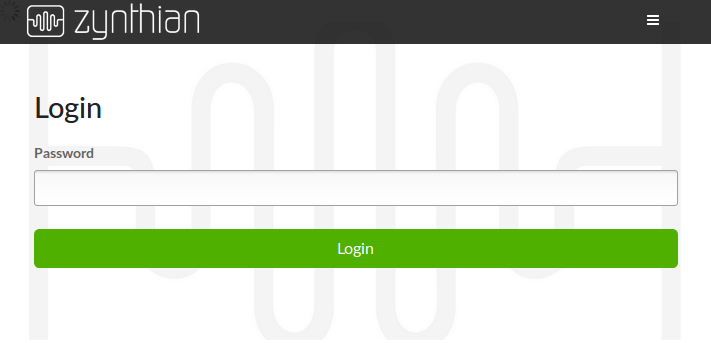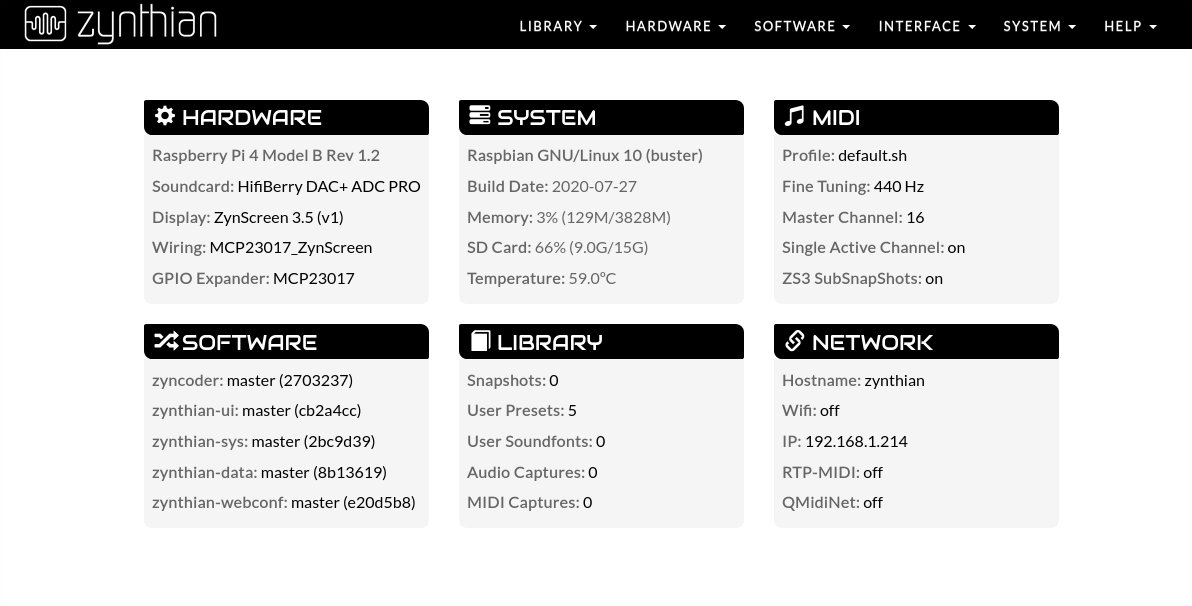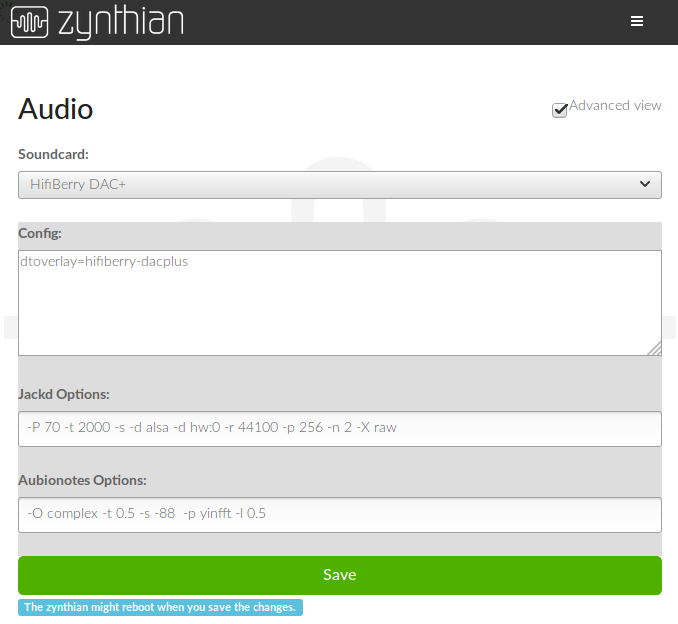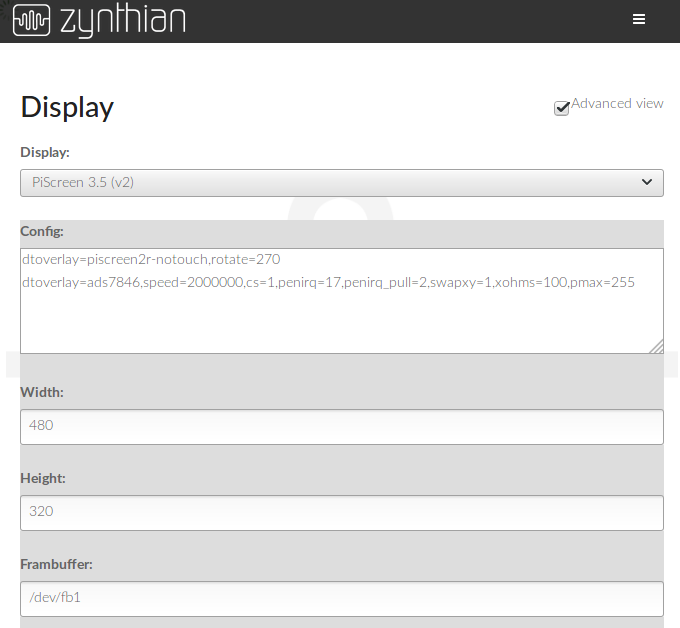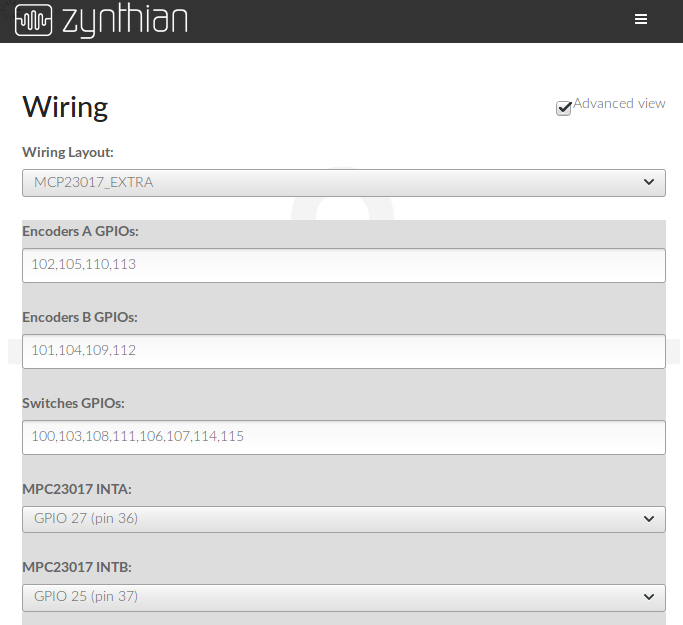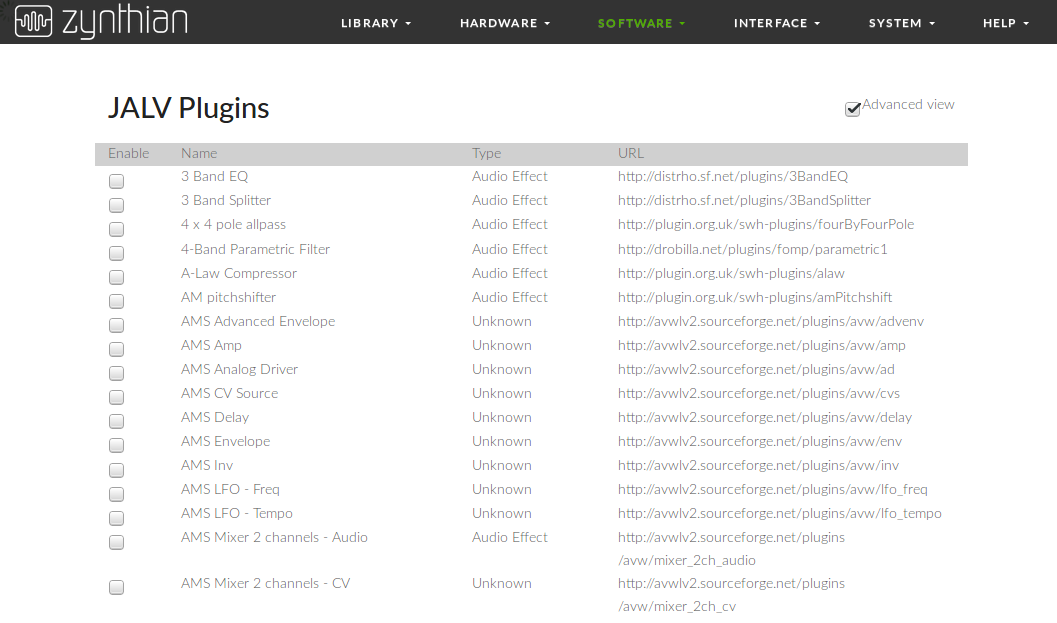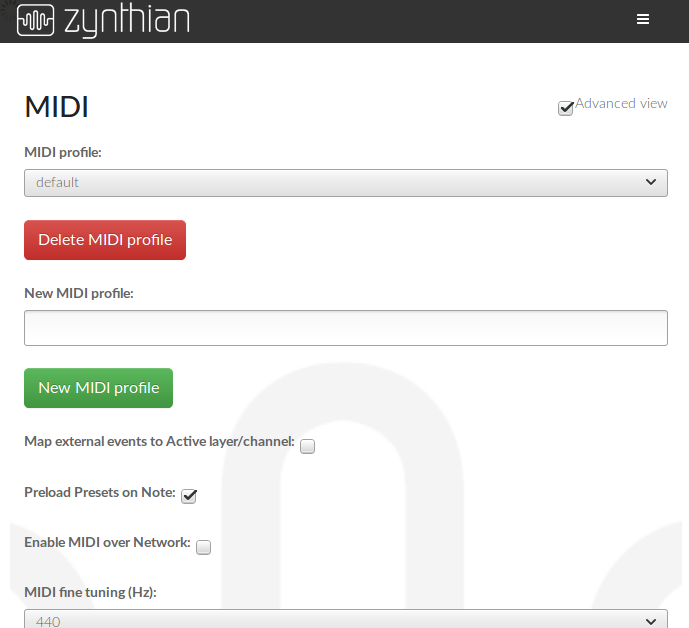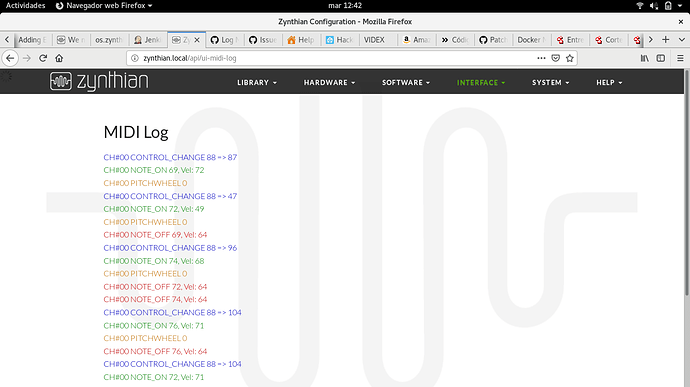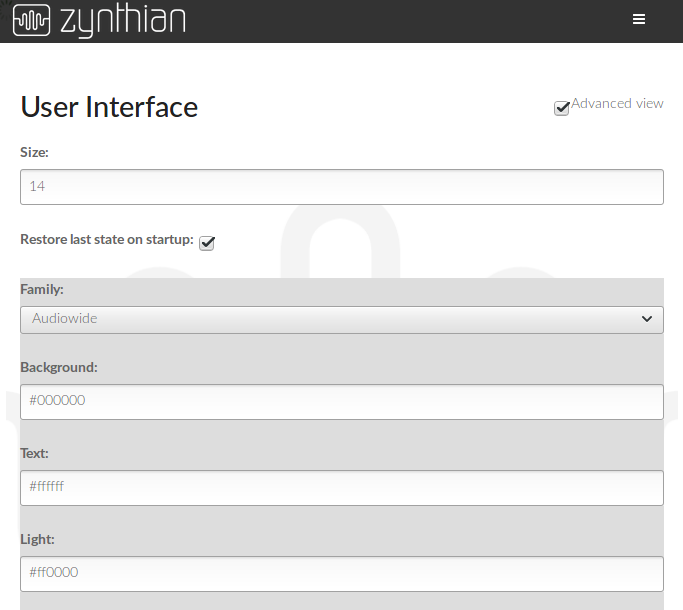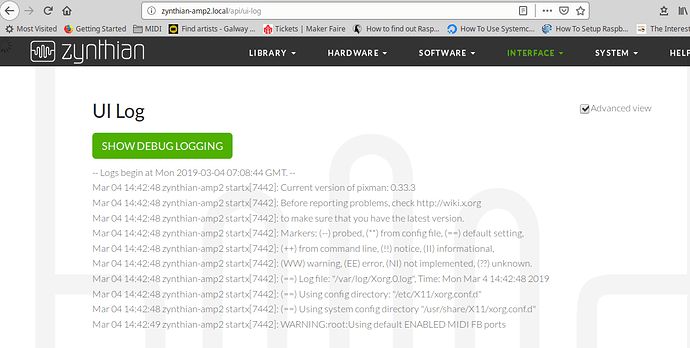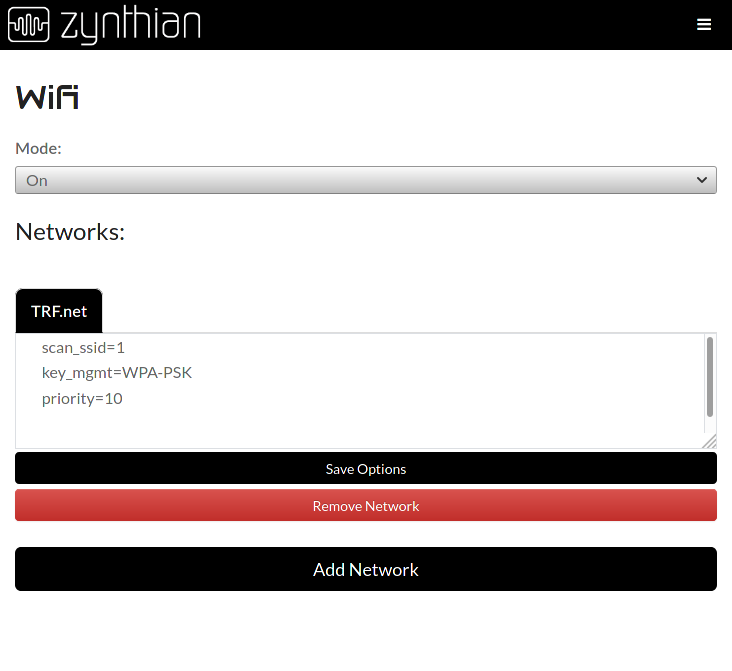Difference between revisions of "Web Configuration User Guide"
m (→Plugins) |
|||
| Line 115: | Line 115: | ||
====Restore Status on Startup==== | ====Restore Status on Startup==== | ||
| − | + | ====Display Log==== | |
Display a log of User Interface actions for debugging. | Display a log of User Interface actions for debugging. | ||
[[File:UIlog.png|right]] | [[File:UIlog.png|right]] | ||
| + | |||
| + | <br clear=all> | ||
==System Management== | ==System Management== | ||
Revision as of 19:53, 8 March 2019
The WebConf Tool is the Zynthian Web Configuration Tool, a web interface hosted inside your Zynthian device that allows you to:
1 Login
You can access the webconf tool from any computer using a web browser. Your Zynthian Box must be connected to your local network, or directly to your computer with an ethernet cable (link local, point to point).
For connecting your Zynthian Box to your local network you can use an ethernet cable connected from your router to your Zynthian Box. Also, if the WIFI has been configured previously in your Zynthian, you should be allowed to connect by WIFI.
For addressing your Zynthian box from your browser, you can use this 2 methods:
- Browse to http://zynthian.local. This doesn't work in all devices. Many Windows-PCs and mobile devices doesn't fully support the mDNS protocol.
- If you your browser can’t find the zynthian.local address, you will then need to figure out what IP address has been assigned to your Zynthian Box. For more details, see Finding your IP address. Once you have your Zynthian's IP address (xxx.xxx.xxx.xxx), you can browse to http://xxx.xxx.xxx.xxx. Easy!
2 Dashboard
3 Library
3.1 Snapshots
Manage the snapshots (a stored configuration of instruments and settings.
3.2 Soundfonts
Soundfonts are files that contain a set of sampled sounds for an instrument.
3.3 Presets
3.4 Captures (Audio & MIDI)
Manage files that contain musical performance data that you have captured.
4 Hardware
4.1 Audio
Configure soundcards and audio adapters
4.2 Display
Configure the touchscreen display.
4.3 Wiring Layouts
Configure wiring for the encoders and switches.
Controllers/knobs/switches
5 Software
5.1 Update
5.2 Pianoteq
configure the Pianoteq plugin. (enable paid license)
5.3 Plugins
Manage the installed plugins.
6 Interfaces
6.1 MIDI
MIDI configuration page. Setup and store different profiles that are MIDI configurations.
6.1.1 Profiles
Manage storage of MIDI configuration profiles
6.1.2 Options
Master Channel, Active Layer, MIDI over Network, Preload Presets on Note, etc.
6.1.3 Filter/Router
6.1.4 Devices
Displays all received MIDI messages. Useful for debugging MIDI connection and configuration.
6.2 User Interface
Customize the user interface.
6.2.1 Colors, Fonts, Sizes, etc.
6.2.2 Restore Status on Startup
6.2.3 Display Log
Display a log of User Interface actions for debugging.
7 System Management
7.1 WIFI
7.2 Security/Access
7.3 Backups/Restore
